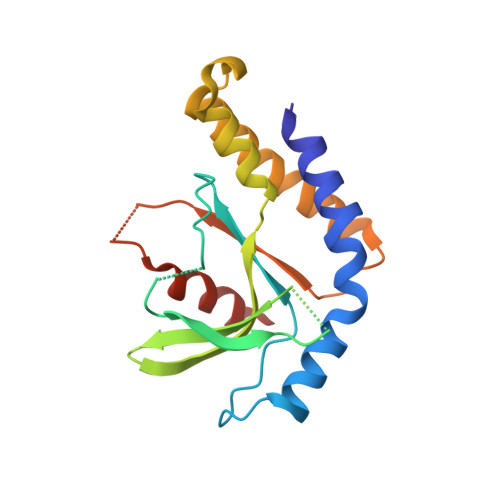Discovery of a Novel cGAMP Competitive Ligand of the Inactive Form of STING.
Siu, T., Altman, M.D., Baltus, G.A., Childers, M., Ellis, J.M., Gunaydin, H., Hatch, H., Ho, T., Jewell, J., Lacey, B.M., Lesburg, C.A., Pan, B.S., Sauvagnat, B., Schroeder, G.K., Xu, S.(2019) ACS Med Chem Lett 10: 92-97
- PubMed: 30655953
- DOI: https://doi.org/10.1021/acsmedchemlett.8b00466
- Primary Citation of Related Structures:
6MX0, 6MX3, 6MXE - PubMed Abstract:
Drugging large protein pockets is a challenge due to the need for higher molecular weight ligands, which generally possess undesirable physicochemical properties. In this communication, we highlight a strategy leveraging small molecule active site dimers to inhibit the large symmetric binding pocket in the STING protein. By taking advantage of the 2:1 binding stoichiometry, maximal buried interaction with STING protein can be achieved while maintaining the ligand physicochemical properties necessary for oral exposure. This mode of binding requires unique considerations for potency optimization including simultaneous optimization of protein-ligand as well as ligand-ligand interactions. Successful implementation of this strategy led to the identification of 18 , which exhibits good oral exposure, slow binding kinetics, and functional inhibition of STING-mediated cytokine release.
Organizational Affiliation:
Departments of Chemistry, Immunology, Chemistry Modeling and Informatics, In Vitro Pharmacology, Target Protein Design and Structural Chemistry, Merck & Co., Inc., 33 Avenue Louis Pasteur, Boston, Massachusetts 02115, United States.
















